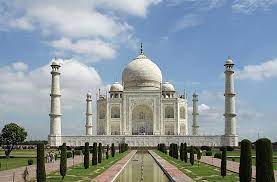How to Win Indian Luxury Market in 2024
India is estimated to be third largest consumer market by 2030 after US and China. According to Standard Chartered Bank Research, India's GDP will nearly double in the next seven years to $6 trillion, and per capita income will increase to $4,000 by 2030. By that time, there is projected addition of 110 million middle-income households and 14 million high-income households as per Deloitte report. The number of ultra-high net worth individuals will rise by over half in the next five years from 12,069 in 2022 to 19,119 individuals in 2027.
India, with its rising affluence, is becoming favorite destination for global luxury brands. Recently, Italian menswear brand Brioni, Spanish brand Balenciaga and Swiss choclate maker Laderach have made their debut in India. Several other players like Italian luxury house Golden Goose, British luxury brand Dunhill, Paris’s iconic department store Galeries Lafayette and Armani Caffe have announced their plans to enter Indian market soon.
With India at the forefront of the positive growth, global luxury brands urge to know the secret sauce to crack complex Indian luxury market. Here are 4 key strategies to conquer India model:
1) Service Excellence: It is crucial for brands to invest in creating immersive in-store experiences that reflect brand philosophy and codes. For this, brands really need to train and sensitize their store associates to make each person stepping into their store feel special and valued. Some of them might be aspirers today, but with right tone and attitude, they might turn them into future customers. As experts in their field, they should offer tailored service, advice, and guidance throughout the customer’s journey. Clients should be addressed with utmost sincerity, empathy and diligence. In-depth product knowledge, core understanding of the brand’s voice and right temperament are all aspects of service excellence.
Exceptional customer service, personalized experiences and attention-to-detail will help brands to not just build positive brand perception but also develop deeper emotional connection with customers. Moreover, in a country like India, where guest is considered as equivalent to God, luxury customer service can never be compromised.
2) Tech-led experience: Investing in technological tools across online and offline channels is crucial for luxury brands to magnify the relationship between customer and sales staff. Tech will assist sales staff to provide tailor-made product recommendations to customers as well as generate operational efficiencies through better inventory management. Developing centralized database will provide a better sense of location of inventory in the maison, as well as real-time availability in other store locations to provide frictionless customer experience.
Technology will also aid in enriching the customer journey and brand discovery through immersive experiences, such as virtual try-ons or previews of product customization. It will enable brands to engage with customers and build brand positivity.
3) Right Product and Pricing Strategy: Traditionally, new product collections in India were launched at least a season later than the western markets. Likewise, high prices were charged for luxury goods due to hefty import duties. This forced well-versed Indian consumers to buy these goods from international locations which provided latest products, more variety at better prices. However, lately, most of the brands have recognized this fact and are making all efforts to provide up-to-date product range and similar pricing in India.
The government’s proposal to impose a 20% tax on expenditures made abroad (under the Liberalised Remittance Scheme), in case of amounts exceeding Rs.7 lakh in a financial year, is likely to increase the sales of luxury brands in India. With this new rule being effective, the difference in the prices of luxury goods in India and abroad will lessen, making it attractive for buyers to shop in India. This could be a great opportunity for international brands to expand their footprint in Indian market (but only if they can live up to discerning Indian consumers’ product and service expectations!).
Also, these brands can strategically introduce entry-level or diffusion lines to tap into the expanding pool of aspirational luxury buyers in India. According to Bain and Company report, affordable luxury segment is estimated to touch US$ 1.5 billion by 2025 at the CAGR of 25% between 2023 and 2025, exceeding the overall growth rate of the luxury market, which is around 20%.
Thorough understanding of local culture is equally important to navigate unique Indian market successfully. Introduction of India-exclusive collections to create deeper connection with uber-rich Indians can be a good strategy. For instance, Louis Vuitton launched exclusive ‘Rani Pink’ footwear collection to celebrate India’s rich cultural heritage.
4) Retail Presence: Although, India is one of the most promising luxury markets in the world, infrastructure is the major concern inhibiting the growth of luxury in India. There are handful of high-end malls in the country which are also limited to tier 1 cities. Unlike developed markets, there is lack of quality retail space. There are no luxury high-streets or factory outlets in India. For instance, European locations like Bicester village in London or La Roca Village in Barcelona where over 150 designer labels including Burberry, Prada, Jimmy Choo and Gucci are available under one roof are missing in an emerging luxury market like India.
Looking at the growing demand of luxury goods by value-seeking buyers, such formats should soon be introduced in India. It will not just provide aspirational Indian consumers with great product variety at promotional prices but will also offer them true luxury experience through building one stop shop luxury buying experience with architectural beauty, green surroundings and culinary treat. These formats will provide Indians exposure to similar shopping environment as available in foreign destinations and will deter them to make their purchases outside India during their business or leisure travel to US, Europe, London, etc.
(This article is previously published in Business World)
